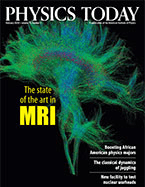
PHYSICS TODAY
Scope & Guideline
Charting the Course of Modern Physics and Astronomy
Introduction
Aims and Scopes
- Interdisciplinary Research in Physics:
The journal emphasizes research that intersects with other fields, such as biology, chemistry, and environmental science, showcasing how physics principles can address complex global challenges. - Emerging Technologies and Innovations:
A consistent focus on advancements in technology, particularly those that leverage physics for practical applications, such as quantum computing, renewable energy, and materials science. - Public Engagement and Education in Physics:
The journal highlights the importance of science communication and education, aiming to engage a broader audience and promote interest in physics among students and the general public. - Ethics and Social Implications of Physics:
Discussion of the ethical considerations and societal impacts of physics research, including topics like nuclear energy, climate change, and scientific integrity. - Historical Perspectives in Physics:
An exploration of the history of physics, including significant historical figures and milestones, which provides context for current research and its evolution.
Trending and Emerging
- Climate Change and Sustainability:
An increasing number of articles focus on the role of physics in understanding and combating climate change, including advancements in renewable energy technologies and sustainable practices. - Quantum Technologies:
There is a notable rise in publications discussing quantum computing, quantum sensing, and other quantum-related technologies, reflecting the growing interest and investment in this field. - Health and Medical Physics:
Emerging themes include the application of physics in medical technologies, such as imaging techniques and radiation therapy, highlighting the interdisciplinary nature of modern physics applications. - Artificial Intelligence and Machine Learning in Physics:
The integration of AI and machine learning techniques in physics research is gaining traction, with discussions on their implications for data analysis, simulation, and experimental design. - Social Justice and Equity in Science:
A growing emphasis on diversity, equity, and inclusion within the physics community is evident, as the journal explores the social dimensions of scientific practice and education.
Declining or Waning
- Traditional Physics Education:
While education remains a key theme, there is a noticeable decline in discussions centered on traditional methods of teaching physics, with a shift towards innovative and interactive pedagogies. - Purely Theoretical Physics:
There is a waning emphasis on purely theoretical discussions without practical application, as the journal increasingly seeks to connect theoretical insights with real-world challenges and technologies. - Niche Specializations:
Topics that focus on highly specialized areas of physics with limited broader relevance are becoming less frequent, as the journal aims for broader appeal and interdisciplinary relevance.
Similar Journals
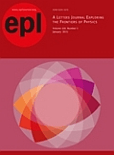
EPL
Advancing the Frontiers of Physics and AstronomyEPL, a prominent journal published by IOP Publishing Ltd, stands at the forefront of the field of Physics and Astronomy. With a history of impactful contributions stretching from 1986 to 2024, EPL serves as a dynamic platform for researchers to disseminate their pioneering findings and innovative ideas. The journal, with a current category ranking of Q2 among its peers and a competitive Scopus rank of #101 out of 243 in the general physics and astronomy category, reflects its substantial reputation and contribution to the scientific community. Although it operates under a traditional subscription model, EPL's reach is extensive, enabling access to a diverse readership that includes academicians, industry professionals, and students alike. By fostering interdisciplinary collaboration and promoting rigorous research, EPL continues to play a vital role in shaping the future of physics and astronomy.
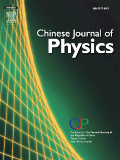
CHINESE JOURNAL OF PHYSICS
Elevating Knowledge in Physics and AstronomyCHINESE JOURNAL OF PHYSICS is a distinguished publication in the field of physics, published by Elsevier. With its roots in Taiwan, this journal has been a vital platform for disseminating innovative research findings since its convergence in 1996, and it continues to thrive, with articles contributing to the advancement of physics and astronomy until 2024. The journal is recognized for its high quality, achieving a notable Q2 ranking in the Physics and Astronomy category, positioning it among the top 30 out of 243 journals in its field, reflecting an impressive 87th percentile ranking. Although it does not operate under an open access model, the journal offers valuable insights into the latest trends and developments in general physics and astronomy, making it an essential resource for researchers, professionals, and students dedicated to advancing their knowledge and understanding of these dynamic fields. With a commitment to rigorous peer review and a diverse range of articles, the CHINESE JOURNAL OF PHYSICS is instrumental in fostering collaboration and innovation within the global scientific community.

CANADIAN JOURNAL OF PHYSICS
Elevating physics discourse with every publication.The Canadian Journal of Physics, with ISSN 0008-4204 and E-ISSN 1208-6045, is a prominent publication in the field of physics, published by Canadian Science Publishing. Established in 1970, this journal serves as a vital platform for disseminating groundbreaking research and innovative findings across a spectrum of topics within physics and astronomy. With a current Q3 ranking in the miscellaneous category and a respectable Scopus rank of 130 out of 243, the journal ranks within the 46th percentile, confirming its relevance and contribution to the scientific community. Researchers, professionals, and students are encouraged to submit their work for consideration in this esteemed journal, which aims to foster scholarly exchange and advance knowledge in the physical sciences. Although the journal operates under a traditional access model, its rich archive and contemporary insights ensure that it remains a critical resource for anyone invested in the dynamics of physics.
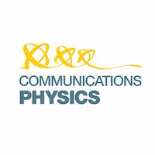
Communications Physics
Fostering dialogue among the brightest minds in physics.Communications Physics is a premier open access journal published by Nature Portfolio, dedicated to disseminating high-quality research in the field of Physics and Astronomy. Since its inception in 2018, the journal has rapidly established itself as a vital platform for innovative scientific communication, boasting an impressive Impact Factor and achieving Q1 status in the 2023 category of Physics and Astronomy (miscellaneous). With a Scopus rank of #31 out of 243, placing it within the 87th percentile, Communications Physics attracts a global audience of researchers, professionals, and students eager to engage with cutting-edge findings. The journal supports open access, ensuring that research is freely available to the public, which enhances its visibility and encourages broader discussions within the scientific community. Located in Berlin, Germany, Communications Physics aims to bridge the gap between various disciplines within physics, fostering interdisciplinary collaboration and inspiring future research endeavors.
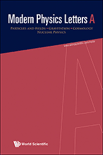
MODERN PHYSICS LETTERS A
Pioneering Discoveries in Modern PhysicsMODERN PHYSICS LETTERS A, published by World Scientific Publishing Co Pte Ltd, is a distinguished journal in the field of physics that serves as a pivotal platform for researchers, professionals, and students alike. With ISSN 0217-7323 and E-ISSN 1793-6632, the journal has gained international acclaim for its contributions to Astronomy and Astrophysics as well as Nuclear and High Energy Physics. The journal is ranked in Q3 for both Astronomy and Astrophysics and Nuclear and High Energy Physics, showcasing its relevance in these areas, while also achieving a Q2 ranking in the broader category of Physics and Astronomy (miscellaneous). Spanning from 1996 to 2024, MODERN PHYSICS LETTERS A promotes open dialogue and dissemination of pioneering research findings and innovative theories. While the journal operates without an open access option, its rich content is easily accessible through various academic databases, ensuring that vital research is shared widely among the scientific community. Situated in Singapore, this journal plays an essential role in the continuous advancement of the physics discipline, fostering collaboration and knowledge sharing among global researchers.
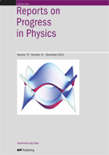
REPORTS ON PROGRESS IN PHYSICS
Exploring significant developments in physics since 1934.Reports on Progress in Physics is a prestigious scholarly journal published by IOP Publishing Ltd, based in the United Kingdom. With an illustrious history dating back to 1934, this journal serves as a vital resource for researchers and professionals in the fields of physics and astronomy, offering comprehensive overviews of significant developments in these disciplines. It holds a commendable Q1 classification in both Medicine (miscellaneous) and Physics and Astronomy (miscellaneous) categories, further underscored by its impressive ranking as 4th out of 243 in the general physics and astronomy sector, placing it in the top 2% percentile on Scopus. The journal is dedicated to disseminating high-quality, peer-reviewed articles that facilitate the understanding of complex physical phenomena and their applications. Although it does not currently offer open access options, its rigorous editorial standards ensure that only the most impactful research reaches its wide audience of academics, practitioners, and students, solidifying its role as a cornerstone of knowledge in the physical sciences.
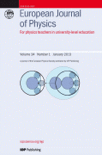
EUROPEAN JOURNAL OF PHYSICS
Driving Excellence in Physics ResearchEuropean Journal of Physics, published by IOP Publishing Ltd, is a premier international journal serving the diverse field of physics and astronomy. With a commitment to advancing scientific knowledge since its inception in 1980, the journal provides a platform for original research articles, reviews, and topical discussions in various domains, including theoretical and experimental physics. Operating out of the United Kingdom, the journal has achieved a commendable Q2 ranking in the Physics and Astronomy (miscellaneous) category for 2023, reflecting its robust influence in the academic community, alongside a notable Scopus Rank that underscores its relevance in both the Social Sciences and General Physics and Astronomy fields. Although it does not currently offer open access, the journal's traditional publication model ensures rigorous peer review, maintaining high scholarly standards that are imperative for researchers, professionals, and students striving to stay ahead in their respective fields. Don't miss the opportunity to engage with cutting-edge research and contribute to the ongoing dialogue in physics by accessing this vital resource.

PHYSICS WORLD
Bridging Theory and Experiment in PhysicsPHYSICS WORLD, published by IOP Publishing Ltd, is a distinguished journal in the realm of physics and astronomy, focusing on disseminating insights and developments from the broad spectrum of the discipline. Since its inception in 1994, this journal has aimed to bring together researchers, educators, and students, facilitating an engaging dialogue that spans theoretical and experimental advances in physics. Although currently categorized in the Q4 quartile for general physics and astronomy, PHYSICS WORLD contributes significantly by providing a platform for both emerging and established researchers to publish their findings, thus enhancing the collective knowledge within the field. With its dedicated focus on accessibility and collaboration, it serves as a vital resource for those looking to stay informed on the latest trends, research breakthroughs, and innovations in physics. Subscribers can access an array of articles and analysis that explore complex concepts while remaining approachable to a wide audience. For those eager to contribute to the ever-evolving landscape of physics, PHYSICS WORLD remains an important avenue for knowledge exchange and research dissemination.

Revista Cubana de Fisica
Connecting Scholars to Drive Scientific DiscoveryRevista Cubana de Fisica is a prominent open-access journal based in Cuba, published by EDICIONES CUBANAS. With its ISSN 0253-9268 and E-ISSN 2224-7939, this journal has been dedicated to advancing the field of Physics and Astronomy since its transition to open access in 2005, making high-quality research readily available to a global audience. Despite its current Scopus rank of #229 out of 243 in the genre, placing it in the 5th percentile, the journal remains a vital platform for disseminating innovative studies and findings, particularly within the broader scientific community in Latin America. Covering a diverse range of topics in physics, the magazine aspires to foster collaboration among researchers, students, and professionals alike, thus bridging the gap between theoretical exploration and practical application. The journal operates under the ambitious objective of contributing to the advancement of scientific knowledge from 2011 to 2024 and beyond, reinforcing its commitment to addressing contemporary challenges in physics and fostering a vibrant academic culture.

PHYSICS IN PERSPECTIVE
Unraveling Physics Through Historical InsightsPHYSICS IN PERSPECTIVE, published by SPRINGER BASEL AG, is an esteemed journal dedicated to the intricate interplay between the history of physics and its contemporary implications. With an ISSN of 1422-6944 and an E-ISSN of 1422-6960, this journal has established itself as a pivotal resource for researchers, scholars, and students who seek a deeper understanding of physics through a historical lens. The journal enjoys a Q1 ranking in History and a Q3 ranking in Physics and Astronomy (miscellaneous), illustrating its significance in the arts and humanities as well as its notable contributions to physics scholarship. Published in Switzerland, it provides a unique platform for interdisciplinary dialogue, combining historical analysis with modern physics discussions. As it continues to grow through its converged years from 1999 to 2024, PHYSICS IN PERSPECTIVE remains committed to enriching the academic community and fostering innovative research that bridges the past and present of the physical sciences.